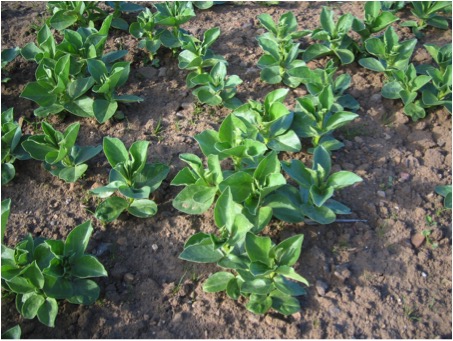Pests in spring legumes & forage and vegetable brassicas, May 2019
2 May 2019Spring peas & beans
Spring sown crops should be checked for pea and bean weevil damage. The damage is very distinctive – notches eaten out of the sides of leaves. If the growing points of plants are being attacked then a pyrethroid insecticide treatment may be worthwhile. Note that weevil resistance to pyrethroid insecticides has been found in England. If there are any signs of poor control of weevils after a pyrethroid treatment please contact your agronomist to arrange for weevils to be tested for resistance.
Forage & vegetable brassicas
The predicted start of cabbage root fly egg laying this season is from early May onwards, so any uncovered crops will be at risk of egg laying by this pest. Crops that can receive a foliar drench treatment such as cabbage, cauliflower and Calabrese and forage kale should be treated with a drench by mid-May to prevent root damage by root fly grubs, with subsequent treatments timed to coincide with second-generation root fly egg-laying later in the season.
If flea beetle damage is occurring to emerging crops, then a pyrethroid insecticide treatment can be used. If it rains this will keep the beetles off plants as they prefer drier conditions.
Diamondback moths have been found in traps in our monitored crops in Fife, Angus and East Lothian. Growers should check crops for eggs and young caterpillars and apply control measures where necessary. Note that diamondback moth are capable of laying eggs through some types of mesh or if mesh is damaged or stretched (and so can cabbage root fly).
Sign up to the FAS newsletter
Receive updates on news, events and publications from Scotland’s Farm Advisory Service

